Fixes for Range Hood Lights That | Won’t Turn On

If your range hood lights aren’t working, the issue could stem from a variety of causes, including power supply problems, faulty switches, or damaged components. By following the diagnostic steps outlined in this guide, you can fix many common lighting issues. If the problem persists, don’t hesitate to contact a professional for assistance and get your kitchen back to optimal function. Regular maintenance will keep your range hood performing efficiently for years.
Fixes for Range Hood Lights That Won’t Turn On
A range hood is one of the most important appliances in your kitchen, but when its lights stop working, it can quickly become a frustrating issue. Whether you’re trying to cook at night or need clear visibility for your tasks, proper lighting is essential. When the range hood light fails to turn on, it could be caused by a variety of issues. This guide will help you identify the causes and walk you through solutions to get your kitchen lighting back on track.
Your fridge is a kitchen superstar as it keeps all your food fresh and drinks cold.
But does the fridge feel warm when you open it?
Is there water all over the floor?
Fridge issues are the worst!
Common Causes of Range Hood Light Failures
Several factors can cause the lights on your range hood to stop working, from simple problems like burnt-out bulbs to more complex issues like wiring or control board failures. Here’s a breakdown of the most common causes:
- Power Supply Issues: If the range hood isn’t properly plugged in or the power source is faulty, the lights won’t turn on.
- Burnt-Out Light Bulbs: The simplest and most frequent cause of lighting issues.
- Faulty Light Sockets: Dirty or damaged sockets can prevent bulbs from making proper contact.
- Wiring Problems: Loose or damaged wires can prevent electricity from reaching the lights.
- Broken Light Switch: A malfunctioning switch can stop the light from turning on.
- Defective Electronic Control Board: In advanced range hoods, a damaged control board can fail to signal the lights to turn on.
- User Interface Control Failures: For range hoods with digital interfaces, issues with the control panel or ribbon cable can disrupt light function.
- Faulty Transformer: The transformer may fail to regulate the voltage for the lights, causing them to stop working.
Step-by-Step Diagnosis and Fixes
1. Check Power Supply
First, ensure the range hood is properly powered:
- Plug Check: Confirm the range hood is plugged in.
- Circuit Breaker: Inspect the fuse box or circuit breaker for any tripped circuits or blown fuses.
- Test the Outlet: Plug another appliance into the same outlet to confirm it’s functioning.
2. Replace Light Bulbs
A common and simple fix is replacing the light bulbs:
- Turn off the power: Always unplug the range hood before handling electrical components.
- Remove the old bulbs: Carefully unscrew the old bulbs.
- Install new bulbs: Replace the bulbs with new ones of the correct type and wattage. Ensure they are securely seated in the sockets.
3. Examine Light Sockets
If the bulbs are intact but the lights still won’t turn on, check the sockets:
- Test for Continuity: Use a multimeter to check the light sockets for continuity.
- Clean the sockets: Grease or debris buildup can obstruct the connection. Clean them carefully.
- Replace faulty sockets: If there’s no continuity, replace the socket.
4. Inspect Wiring
Loose or damaged wiring can interrupt the current:
- Turn off the power: Disconnect the range hood before inspecting the wiring.
- Check wires: Look for visible loose or damaged wires.
- Reconnect or replace: Reattach loose wires, and replace any frayed or damaged ones.
5. Test Light Switch
If the switch is faulty, the lights won’t turn on:
- Test the switch: Use a multimeter to check the continuity of the light switch.
- Replace the switch: If no continuity is found, replace the faulty switch.
- Clean the switch: Remove any grease or grime that could be interfering with its function.
6. Check the Electronic Control Board
If your range hood uses an electronic control board, this could be the issue:
- Inspect the control board: Look for any visible burn marks or damage.
- Replace if necessary: A damaged control board will need to be replaced to restore functionality.
7. Examine User Interface Control
For range hoods with digital controls, check the interface:
- Test for signals: Make sure the interface is correctly sending signals to the control board.
- Check the ribbon cable: Ensure the ribbon cable connecting the interface to the board is intact.
- Replace the interface: If the control is malfunctioning, replacing the interface may solve the problem.
8. Replace Transformer
Some range hoods use a transformer to regulate power for the lights:
- Test the transformer: Using a multimeter, check if the transformer is outputting the correct voltage.
- Replace the transformer: If it’s defective, replace it to restore light functionality.
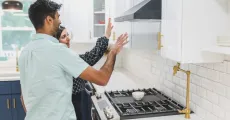
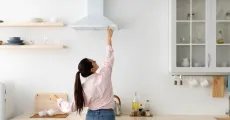
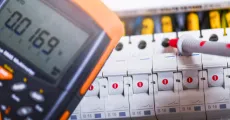
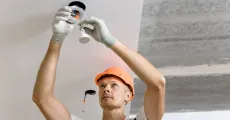
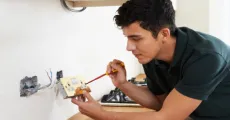
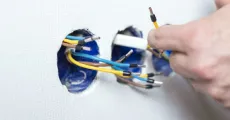
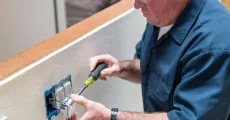
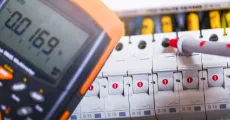
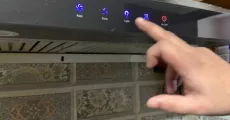
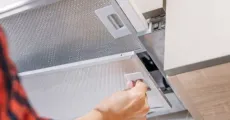
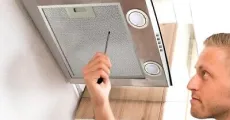
When to Call Appliance Repair Pros
If these troubleshooting steps don’t fix the problem, or if you’re uncomfortable performing these tasks, CLT Appliance Repair is here to help. Our professional technicians can diagnose complex issues and safely repair your range hood.
Contact CLT Appliance Repair today for expert help with your range hood repair service!
FAQs
Possible causes include burnt-out bulbs, faulty wiring, or issues with the control board. Follow the troubleshooting steps to identify the issue.
Test for continuity using a multimeter. If the socket is damaged, clean it and replace it if necessary.
Yes, a malfunctioning switch can prevent the lights from turning on. Test the switch with a multimeter, and replace it if necessary.
Intermittent lighting could be due to loose wiring, a malfunctioning switch, or issues with the control board. Inspect and tighten the connections.
Clean the bulbs and sockets regularly, and check for signs of wear on wiring and switches to prevent future issues.
Don't let a malfunctioning Range Hood disrupt your daily life. Contact CLT Appliance Repair today at 704-606-9043 to schedule your Range Hood repair service.
We'll have your Range Hood back to optimal performance in no time!.

